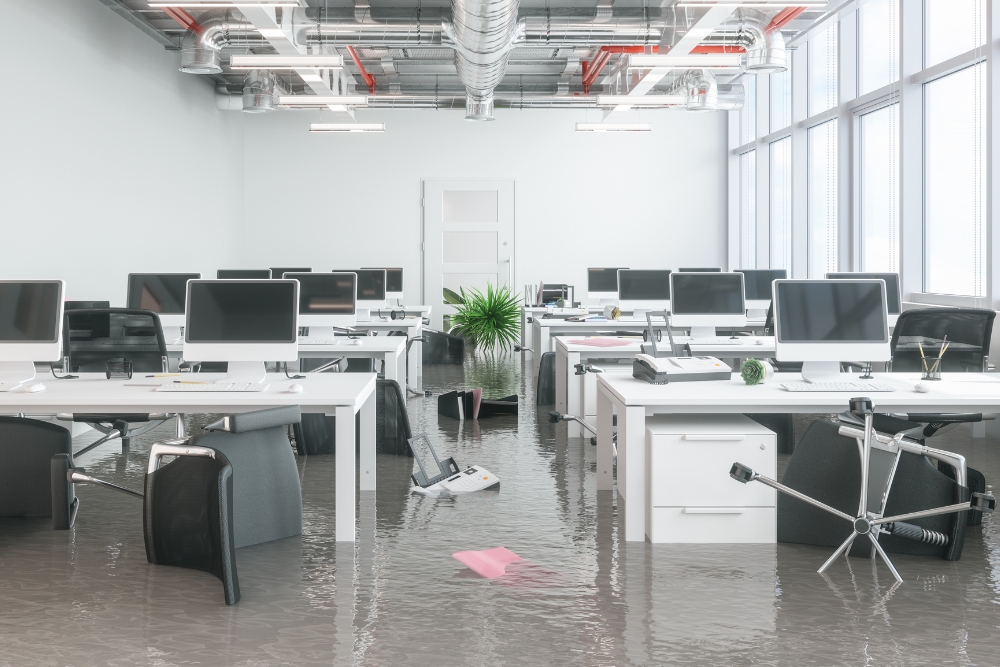No building is completely safe from natural disaster. Even facilities that are carefully maintained and safeguarded by rigorous safety precautions may still experience the results of fire or flooding. Such unwelcome events can compromise not only the infrastructure of the facility, but also the contents inside—with damage potentially extending to electronics, office supplies, furniture, and more.

Facilities managers naturally have some responsibilities to get the building back up and running after an inclement incident, and the first step is always to ensure full remediation of smoke, soot, and floodwater. Beyond that, it’s important for facilities managers to address damaged assets. While some items may be so damaged they require replacement, salvaging and rehabilitating damaged items can often be a viable path—especially when facilities managers enlist dependable contents restoration professionals.
The Right Response for Facilities Managers
First and foremost, it’s important for facilities managers to move decisively, making restoration their top priority following any kind of fire or flood event. The sooner this process begins, the more likely it is that key assets can be salvaged. Facilities teams should roll up their sleeves and get to work as soon as they can safely do so.
An important starting point is to create an inventory of all damaged items. Thorough documentation can expedite both the insurance claims process and the work of the contents restoration company, while also ensuring that important assets don’t get forgotten or overlooked.
To rehabilitate items damaged by water, soot, or smoke, it’s important to work with an experienced contents restoration team—ideally one with ample experience handling electronics and other sensitive items. Often, an insurance company will be able to facilitate the contents restoration process, dispatching a local vendor shortly after the claims process begins.
Again, for facilities managers, there’s a real need to act fast here. The sooner the damage is reported to the insurance company, the sooner the restoration process may begin.
What to Expect from Contents Restoration
Some items may truly be damaged beyond repair, yet often items that seem irredeemable at first glance can be brought back to life. Contents restoration vendors can clean and salvage items of all kinds, including:
- Electronics—computers, servers, routers, and AV equipment.
- Documents—paperwork and other physical media.
- Furniture—upholstery, curtains, fixtures, and more.
As for the process itself, facilities managers should expect their contents restoration vendor to create an inventory of their own, liaising with the insurance adjuster to verify that all key items are accounted for. These items will be safely and sensitively handled as they are transported to an external facility to be cleaned, ensuring they do not take on any additional smoke or soot damage simply by lingering in a compromised building for too long.
The tools and techniques used by the contents restoration provider may vary based on the types of assets as well as the extent of the damage, but some potential processes include HEPA vacuuming, ultrasonic cleaning, and thorough deodorizing.
Once the restoration process is finished, rehabilitated items will be returned to the facility, along with documentation submitted to the insurance provider. The contents restoration vendor may also alert the facilities team to any items that were too far gone—offering to either return them or to safely dispose of them.
Preparing for the Unexpected
Disaster can strike at any commercial building, which makes it important for facilities teams to plan ahead. Conducting a thorough review of insurance coverage—ensuring coverage for contents restoration—is key. Maintaining the name of a trusted contents restoration company may also be wise, allowing for fast outreach following a disastrous event.
In facilities management, it’s important to expect the unexpected—but also to remember that, even when items seem badly damaged, there may still be a real shot at restoration.

Stefan Figley is president of 1-800-Packouts, a contents and personal property restoration provider since 2016 and part of the Five Star Franchising platform of home service brands. Figley has nearly 30 years of experience in the franchise and marketing industries, with a focus on brand growth. He has held executive and leadership positions with nationally recognized companies such as Terminix, Steamatic, Merry Maids, and Jani-King International, as well as prominent international roles in the marketing industry.
